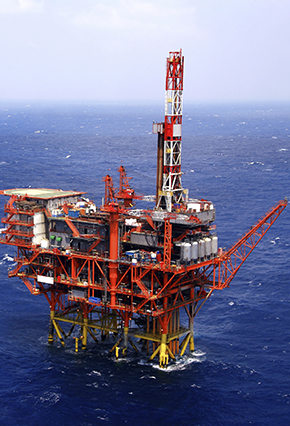Introduction
 On March 17, 2016, the Bureau of Ocean Energy Management (BOEM) published a proposed rule to update the agency’s air quality regulations at 30 C.F.R. Part 550, Subparts A, B, and C. Comments on the proposed rule will be due 60 days after publication of the proposal in the Federal Register.
On March 17, 2016, the Bureau of Ocean Energy Management (BOEM) published a proposed rule to update the agency’s air quality regulations at 30 C.F.R. Part 550, Subparts A, B, and C. Comments on the proposed rule will be due 60 days after publication of the proposal in the Federal Register.
BOEM asserts that its proposal will allow the agency to better fulfill its statutory responsibilities under section 5(a)(8) of the Outer Continental Shelf Lands Act, 43 U.S.C. § 1334(a)(8), by accounting for “all relevant criteria and major precursor air pollutants by cross‑referencing the [Ambient Air Quality Standards and Benchmarks] for those pollutants to those of the [U.S. Environmental Protection Agency (USEPA)].” Additionally, BOEM contends that the proposed rule is necessary to better account for and address air quality impacts from operations in ultra-deepwater and in frontier areas such as the Alaska Arctic.
The proposed rule would make significant changes to current regulations, including addressing a wider range of pollutants and requiring operators and lessees to monitor and control the emissions of a greater number and variety of facilities.
BOEM’s proposed revision of its air quality regulations has the potential to significantly increase the cost of doing business on the OCS and may forestall further development of oil and gas resources in the deepwater Gulf of Mexico and the Alaska Arctic. This alert provides a high‑level overview of major provisions of the proposed rule.
Statutory Background
The Outer Continental Shelf Lands Act (OCSLA) charges the Department of the Interior (DOI) with the “expeditious and orderly development” of the Outer Continental Shelf (OCS), “subject to environmental safeguards.” 43 U.S.C. § 1332 (3). Under this dual mandate, DOI both leases the OCS for oil and gas development and regulates air emissions from oil and gas operations to the extent that activities authorized under OCSLA “significantly affect the air quality of any State.” OCSLA Section 5(a)(8). DOI has delegated these responsibilities to BOEM.
Impacts of the Proposed Rule
With the proposed rule, BOEM drastically broadens the scope of air emissions that an operator must measure, monitor, and control. Ultimately, BOEM’s proposed changes could result in the agency disapproving an operator’s Exploration Plan, Development and Production Plan, or Development Operations Coordination Document that otherwise would have been approved under the existing regulatory scheme. What follows is a short summary of some of the most significant changes in BOEM’s proposed rule:
-
BOEM has broadened the air pollutants to be regulated under its program. Under its existing regulations, BOEM has required companies to report emissions of carbon monoxide, sulphur dioxide, nitrous oxides, total suspended particulates (TSP), and volatile organic compounds. BOEM now proposes to expand the scope of its program to cover all relevant criteria and major precursor air pollutants that are currently regulated under the Clean Air Act (CAA). Among other things, BOEM would create new ambient air quality standards for sulphur oxides (in addition to sulphur dioxide); replace TSP with the indicator pollutant for large particulate matter (referred to as PM10); and create new regulatory requirements for ozone, lead, fine particulate matter (referred to as PM2.5), and ammonia.
Significantly, BOEM also proposes to require operators to collect more frequently, evaluate, and consider emissions data.
BOEM does not propose to regulate greenhouse gas (GHG) emissions. BOEM correctly recognizes that “[s]ection 5(a)(8) of OCLSA specifically is not the appropriate statutory vehicle” to regulate GHGs because GHGs are not regulated through National Ambient Air Quality Standards but instead are regulated under other sections of the CAA. However, in the proposed rule, BOEM expresses its interest in addressing GHGs through non-regulatory measures, and will continue to collect GHG data as a part of the Gulf-wide Offshore Activities Data System (GOADS) for evaluation in National Environmental Policy Act (NEPA) reviews of lease sales and post-lease approvals.
-
BOEM has broadened the definition of “facility.” The current definition of “facility” only captures structures that “emit or have the potential to emit any air pollutant from one or more sources.” BOEM proposes to revise the definition of facility to eliminate this limiting language, thereby capturing a broader range of facilities—including vessels engaged in the installation of subsea tiebacks and pipelines—that are connected to the seabed of the OCS during installation. Additionally, BOEM proposes to revise the definition of “facility” to include “transportation” activities, including pipelines. The proposed rule also would clarify that dynamically positioned drill ships, manmade islands (as well as the equipment used to construct these islands), and DOI-regulated pipelines all fall within the definition of “facility.” Finally, BOEM has amended the “facility” definition to make clear that one “facility” can include multiple rigs, drilling units, vessels, platforms, etc.
-
BOEM may eliminate the “25-Mile Rule.” BOEM currently requires an operator to account for emissions from support vessels only when those vessels are within 25 miles of a platform. The proposed rule would eliminate the “25-mile rule” and replace it with a more stringent requirement in which a lessee is required to report all emissions from support vessels that can be attributed to a facility. Under this “attributed emissions” standard, more operators would be required to engage in modeling, apply best available control technology (BACT), and obtain emissions offsets to remedy adverse ambient air quality impacts. These expanded requirements may prove challenging since many operators already utilize BACT and therefore would have limited options for further reducing emissions impacts. Moreover, in the Arctic, there appear to be no opportunities for operators to acquire offsets.
As noted above, BOEM is soliciting public comments on the proposed rule. Comments will be due 60 days after the proposal is published in the Federal Register, which will most likely occur sometime in April.






 i
i

